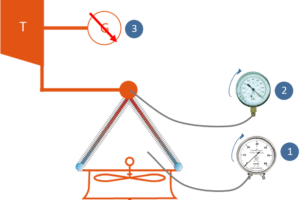- Our PlaygroundOur PlaygroundDiscover Ax System's innovative solutions for maintaining the performance of your industry. Designed to meet the unique needs of each industry, our systems provide effective and efficient cleaning for a range of applications. Whether you're in power generation, oil and gas or any other sector, our tailor-made solutions ensure optimum performance and longevity of your equipment.
- Our SolutionsOur SolutionsDiscover AX System's range of products, designed to meet a variety of industrial cleaning needs. Our products fall into our main categories: Air Cooler and Air Condenser Cleaning, Industrial Misting, Custom Industrial Cleaning, and Industrial Machine Cleaning Services.
We offer specific solutions to meet your unique needs. For instance, we provide Filter Press Cleaners, Electromagnetic Filter Cleaners, and Rotary Filter Cleaners. - What we cleanWhat we cleanDiscover our expertise in high-pressure cleaning for a variety of industrial equipment! Our know-how enables us to work on air condensers, heat exchangers and many other installations. Thanks to our specialized approach, we guarantee optimum performance and enhanced durability for these vital pieces of equipment.
- Our Achievements
- About Us
- Contact
In order to conserve a good efficiency, the fin tubes of the ACC have to be clean periodically. A good question you could ask could be: When should we clean ACC? How to know that it’s time to ACC high pressure cleaning? What key figures can I follow?
ACC cleaning: Visual control
The most obvious control is Visual control : if the fouling is visible on your fins then it’s time to clean!
Air cooled heat exchanger cleaning: make a pressure measurement
You can also measure the internal static pressure evolution inside your ACC. If the pressure goes up gradually, it shows that the air flow trough the fins drops: it’s time to clean! The internal static pressure can be measured with a differencial pressure recorder, but there is also a simpler trick using the door to access inside the ACC: If the torque required to open this door is more difficult than usally, it is a sign that the pressure inside the ACC is higher!
You also have to follow the vaccum level (in bar) in ACC. If it drops progressively, it’s also time to clean! Indeed, when the fin tubes are fouled, the ACC condenses the vapor into water slower, which causes a pressure increasements (vacumm droping) into the vapor circuit.
Finally, in following your production of electricity (in MW), you will definitly know when it’s time to clean! Indeed, when the vaccum level drops, the pressure differential on the turbine drops, which explains the productivity loss.

Cleaning heat exchanger: reproduce the action regulary
All these measurments depend on environnemental conditions (temperature, relative humidity…), but also on the powerplant using conditions such as loading or fan speed.
Therefore we recommand to clean periodically, at least once a year after the pollen season.
In all case, the more often you clean, the easier it is!


